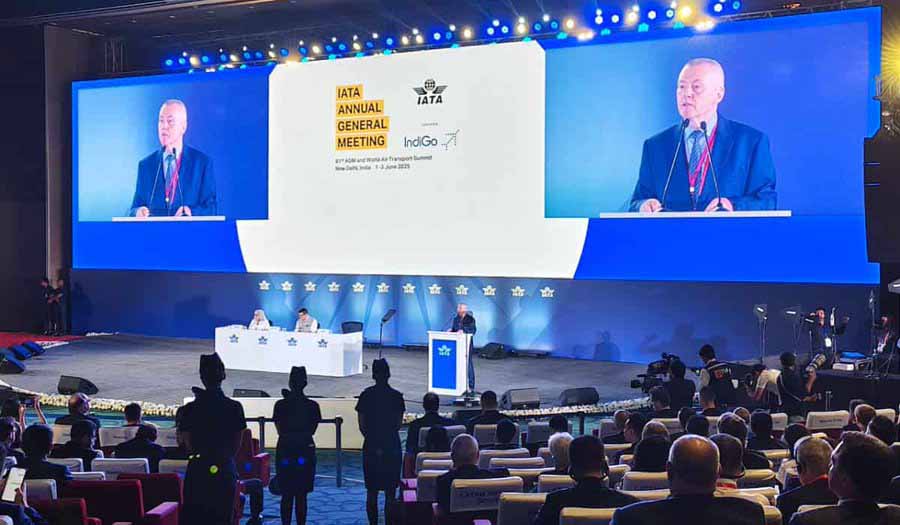

Just three weeks ago Indian aviation was on a historic high, the Prime Minister addressing the world’s major airlines and the accompanying media circus, and the checklist filled with expansion and prosperity.
India’s aviation sector has been soaring, propelled by ambitious fleet expansions, robust infrastructure development, and a burgeoning middle class fueling unprecedented demand for air travel.
That 81st International Air Transport Association (IATA) Annual General Meeting and World Air Transport Summit, hosted in New Delhi from June 1-3, 2025, was set to be a crowning moment, showcasing India’s rise as a global aviation powerhouse. Hosted by IndiGo, India’s largest airline, the event promised to cement the nation’s position as the world’s third-largest aviation market.
Fast forward to June 12, and the tragic crash of Air India Flight 171 on June 12, 2025, has cast a somber shadow over this narrative of triumph, forcing a moment of reflection amid the industry’s bold trajectory.
8 million jobs
The transformation has been remarkable. Domestic air passenger traffic surged to 161.3m in 2024, a 6.12pc increase from the previous year, according to the Directorate General of Civil Aviation (DGCA). IATA projects this figure to triple to 425m by 2044, driven by a growing middle class and supportive government policies. The sector now contributes $53.6bn to India’s GDP and supports 7.7m jobs, including 369,700 direct roles.
With 69pc of South Asia’s airline traffic originating in India, the nation has edged past China to become the world’s most populous, yet its air travel penetration—4.2pc of global passengers—remains a fraction of its potential, signaling vast room for growth.
At the forefront of this boom are IndiGo and Air India, whose aggressive fleet expansions reflect the industry’s confidence. IndiGo, commanding a 64.1pc domestic market share as of April 2025, operates over 2,200 daily flights to 125 destinations. Its order book includes over 900 aircraft, with 30 Airbus A350-900s set to bolster its long-haul ambitions from 2027.

Indigo & AIr India
In November 2024, IndiGo made history by carrying over 10m passengers in a single month, a testament to its dominance. Air India, revitalized under Tata Group ownership, placed one of the largest aircraft orders in history in 2023 for 470 Airbus and Boeing jets, followed by an additional 100 Airbus aircraft in December 2024.
With a fleet of 201 aircraft as of March 2025, Air India is enhancing its global footprint, operating 102 destinations and some of the world’s longest non-stop flights. These orders, totaling over 1,300 aircraft for both carriers, underscore a bold bet on India’s aviation future.
Infrastructure has kept pace with this growth. India’s airport count rose from 49 to 157 by 2024, with plans to reach 400 by 2047. Major hubs like Delhi, Mumbai, Bengaluru, and Hyderabad are expanding, with second airports in Delhi and Mumbai nearing completion.
Prime Minister Narendra Modi’s vision to transform India into a global aviation hub akin to Dubai has galvanized these efforts, with his keynote at the IATA summit expected to highlight sustainability and innovation.
Praise from Willie Walsh
IATA Director General, Glasnevin-born Willie Walsh praised India’s “world-class infrastructure developments” and its potential to lead in sustainable aviation fuel (SAF) production, leveraging its status as the world’s third-largest ethanol producer.,
The IATA congress was poised to be a celebration of this momentum, with IndiGo’s CEO Pieter Elbers, also IATA’s Board of Governors Chair, emphasizing India’s “time” on the global stage.
The event promised to showcase India’s aviation strength, from record-breaking passenger numbers to a young, fuel-efficient fleet averaging 7.3 years old—half the global average.
Discussions were set to focus on modernizing airspace management and addressing challenges like high aviation turbine fuel taxes and exchange rate volatility, which strain airlines’ low-margin operations.

Then came the crash of Air India Flight 171, a Boeing 787-8 Dreamliner, on June 12, 2025, has jolted this optimism.
The flight, carrying 242 people from Ahmedabad to London Gatwick, crashed 30 seconds after takeoff into a residential area, killing 241 onboard and at least 30 on the ground, with only one survivor., The first fatal incident involving a 787 Dreamliner, it has raised questions about safety protocols, maintenance, and the aircraft’s reliability, especially after prior whistleblower claims about Boeing’s manufacturing shortcuts, which the company disputes.
Investigations by India’s Aircraft Accident Investigation Bureau, supported by US teams, are underway, with attention on the extended landing gear and retracted flaps observed during the crash.
The tragedy has shifted the mood from celebration to mourning. Prime Minister Modi and other leaders expressed profound grief, and Air India’s parent, Tata Group, swiftly offered ₹10m per victim to families.
The crash, occurring just days after the IATA summit, has tempered the industry’s confidence, prompting renewed scrutiny of rapid expansion against safety and infrastructure readiness.
Far from grounded
Yet, India’s aviation story is far from grounded. The sector’s fundamentals—rising demand, strategic investments, and global recognition—remain strong. The IATA congress highlighted India’s potential to not only sustain but accelerate its growth, provided it addresses air traffic management gaps and sustainability challenges., Flight 171’s tragedy is a stark reminder that ambition must be matched by rigorous safety standards.
As India mourns, its resolve to build a world-class aviation ecosystem will be tested, but its trajectory toward becoming a global hub endures, tempered by a commitment to learn from this loss.
The tragedy has shifted the mood from celebration to mourning. Prime Minister Modi and other leaders expressed profound grief, and Air India’s parent, Tata Group, swiftly offered ₹10m per victim to families. The crash, occurring just days after the IATA summit, has tempered the industry’s confidence, prompting renewed scrutiny of rapid expansion against safety and infrastructure readiness. Social media posts reflect public anguish and calls for accountability, with some questioning Boeing’s safety record.
Y



